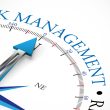by Shannon L. Saccocia, CFA, Chief Investment Officer—Private Wealth, Neuberger Berman
President Donald Trump revealed his list of “reciprocal” trade tariffs on April 2. For two days, the U.S. Treasury market responded in textbook fashion: Facing lower growth prospects, the 10-year yield fell below 4%.
Then things started to go wrong. On Monday, April 7, the yield leapt by more than 15 basis points, and just kept on climbing. By Friday it was at 4.6%—the biggest jump in a single week in almost a quarter century.
The sell-off has knocked investors’ confidence for several reasons. First, U.S. Treasuries are supposed to be a haven, steadying portfolios when equities are volatile. Second, it was a major dislocation in a market that underpins all others and supplies liquidity to the world. And third, if long-term rates were to head above 5%, that would suppress consumer spending, business confidence and corporate investment—potentially outweighing the effect of tax-cut extensions and deregulation upon which a lot of medium-term optimism rests.
The panic eased last week. But might it return? And if it does, can anything be done about it?
Off the Boil
The accelerant for the sell-off was the U.S. Treasury “basis trade.”
In simple terms, traders take short positions in Treasury and interest-rate derivatives and long positions in the equivalent-tenor Treasuries themselves, anticipating that they and other liquidity providers will push the two rates closer together. These positions eke out basis points of return, magnified by the large amount of leverage embedded in the derivatives. An unusually rapid sell-off in Treasuries can burn through the margin backing the derivatives, and because unwinding the trades involves selling Treasuries, lead to a snowball effect.
To assess the likelihood of a repeat of that sell-off, we need to understand why Treasury yields came off the boil last week.
One likely reason is, indeed, that some of the basis trade was de-risked.
Another reason is that the U.S. dollar has continued to lose value even as U.S. equity and bond markets have stabilized. This is concerning for the longer term, as a simultaneous sell-off in both currency and bonds is associated with risky rather than haven countries, and suggests structural damage to global demand for U.S. dollar assets. For now, however, non-U.S. investors with a shorter-term view are being attracted by the combination of higher yields, more favorable yield differentials and the cheaper currency.
The start of earnings season may have helped, too, as it focuses investors’ attention on the micro rather than the macro for eight weeks. So far, as we have noted before, hard economic data has generally been better than soft, and micro data better than macro.
However, the most important bond-market balm has been the temporary rollback of much of President Trump’s tariff program, not least because it appeared to be a response to the Treasury market dislocation. Countries outside of China now face a universal 10% goods tariff during a 90-day period of negotiation. Even the tariff on goods from China has been significantly cut due to a temporary blanket exclusion of smartphones, computers and other electronics.
News Flow
This gives us a sense of how long the current calm might last, and what might disrupt it again.
It is important to note that, while the basis trade can be temporarily deleveraged, it is unlikely to go away entirely: By keeping Treasury derivative pricing in line with cash-market Treasuries, it performs a critical function for the investors, corporates, insurance companies and pension funds that use them. As such, another rapid rise in Treasury yields could still trigger a further disorderly unwind of the trade.
The dollar is still losing ground. If that continues, short-term investors outside the U.S. may eventually decide that the pain from the currency outweighs the gain from the yield.
Even if earnings season is positive, it winds up at the end of May, giving us a timeframe for when investors are likely to refocus on macro uncertainties. If it goes poorly—with lots of weaker guidance, for example—the macro picture could come back into focus sooner. Treasury yields could decline based on a lower growth outlook, but any doubt about their haven status could simply reignite the volatility.
On tariffs, the market has been getting mostly good news since April 9, but it could easily turn bad again: Negotiations could falter, smartphone tariffs could be reinstated, or entirely new charges could be levied on goods like semiconductors or pharmaceuticals. It is worth noting that, while the 90-day “Trump put option” officially expires in early July, news flow from trade negotiations could reach fever pitch much earlier—perhaps during the late-May and early-June period when earnings seasons goes quiet.
On top of all this, the U.S. Federal Reserve will be readying for its next rates decision in early June; the U.S. debt ceiling looks likely to be hit in August, which means that risk could also come over investors’ horizon during June; and now that Congress has passed a draft budget, we can expect to see just how expensive the details will be at around the same time.
Contradictory Objectives
In the event of another dose of bond-market volatility, what are the options?
If it comes because of bad news on tariffs, yet another White House climbdown seems unlikely.
Treasury Secretary Scott Bessent suggested last week that his department could increase its buybacks of “off-the-run” government bonds. However, these purchases, reinstated by Janet Yellen during President Biden’s administration last year, are really meant for liquidity housekeeping rather than liquidity emergencies. They may not be effective in a firefight.
It is likely that the Fed alone could stem a second Treasury market panic. Cutting policy rates aggressively might not be enough to arrest a rapid rise in longer-dated yields, and it would also massively complicate the central bank’s inflation-targeting efforts. A direct market intervention is more likely, recalling its actions during the Global Financial Crisis and the pandemic—but intervening to fix a policy shock inflicted by the government itself could undermine investor confidence even further.
The uncertainty hasn’t gone away because, ultimately, the U.S. government still appears to be pursuing contradictory objectives. If long-term U.S. rates get stuck above 5%, it will not help fulfill the campaign promises to “make housing affordable again,” or provide an incentive to build a factory in the U.S. or buy a new car, regardless of whether it is American or German. But the least damaging way to keep yields below 5% is to deliver good news from the current trade negotiations—which means substantially lowering the tariffs that the White House believes will incentivize domestic manufacturing.
In short, we think investors could face renewed uncertainty after the current period of calm.
Copyright © Neuberger Berman
















